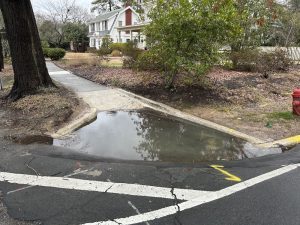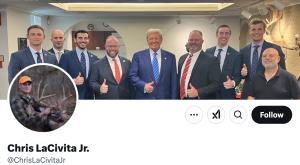At the Rougemont Ruritan Club on the outskirts of northern Durham County, about forty people gathered in a small, warm cabin to talk about race and statues.
It was the sixth meeting of the Committee on Confederate Monuments and Memorials, this time in a location far from the sterile government buildings of downtown Durham.
The committee, which completed its membership in May of this year, has been holding a series of meetings in order to engage the community in a meaningful discussion about the Confederate statue that was toppled outside the old courthouse in August 2017 and how to deal with the other memorials around the city and county.
“We remind you that this meeting is not about the rights or wrongs of how the statue came down,” committee co-chair Charmaine McKissick-Melton told the crowd. “We expect passionate conversation but ask that you also keep it civil.”
Since this meeting did not take place in the city council chambers, attendees were split into four groups, and a volunteer facilitator guided each group through a series of three questions.

The first one read, “What community values should be represented, recognized, and celebrated in our public memorials, markers, and monuments?”
Almost immediately, one group erupted into a debate about the legality of toppling down the statue, with several people insisting that “lawlessness” was rampant. The facilitators patiently reminded the group of the activity at hand, and, after some discord, managed to get everyone to participate.
Robin Kirk, the other committee co-chair, explained to The 9th Street Journal that discussion-style meetings are always more boisterous than public forums because they require attendees to collaborate and listen closely to each other’s points of view.
“People arrive with lots of anger and they just want to stand and say what they want, but in this type of meeting you have to actually listen to other points of view, and people don’t like it,” she said. “The truth is, it barely works. But then you have some really great moments.”
The second discussion question seemed to appeal more to attendees: “What memorials or historic markers do you think are missing from our community? What stories, people, places, or events could be publicly recognized?”
In one group, people agreed that laborers, particularly tobacco workers, were underrepresented in monuments and markers that recount the region’s history. One of the table’s facilitators, Eric Marsh, mentioned how people used to be able to smell tobacco in Durham’s air, and many nodded in what was a rare moment of agreement.
“It’s important to let people just get it all out, even if they have to agree to disagree,” Marsh told the Journal. “And the media will have you thinking it’s blacks against whites, but plenty of white people stand up for minorities.” He nodded towards an elderly white gentleman who’d spoken up passionately for minority groups’ rights earlier in the conversation.
“It’s not blacks against whites, its Durhamites against Durhamites,” he said.
In an effort to hear from as many of those Durhamites as possible, committee meetings have been held all over different parts of the city. The next meeting on Sept. 13 will take place at the American Underground in order to reach a younger demographic.
In addition to engaging the community in discussion, the committee has been charged with “making recommendations to the Board of County Commissioners regarding disposition of the toppled Confederate statue.” As such, the last discussion question was “Considering that there are legal constraints on altering any existing objects of public remembrance, what do you think could be done with the existing statue and monument that reflects our shared values?”
A large group wanted to restore the statue to its original state. Some said to leave it where it was now, in a warehouse undisclosed to the public.
One woman suggested putting it in a museum, while an even more creative attendee suggested to “decide on a new monument and melt the old one in order to make it.” Someone made a comment about how the monument had been erected to celebrate white supremacy, and another promptly called him a liar and a communist.
Daniela Flamini





Comments are closed.